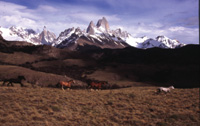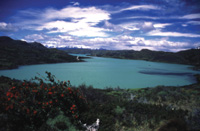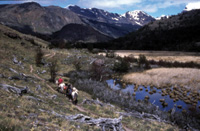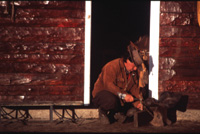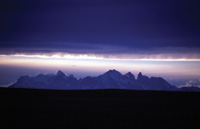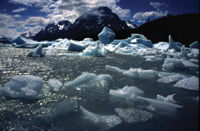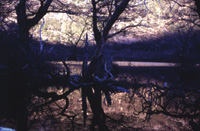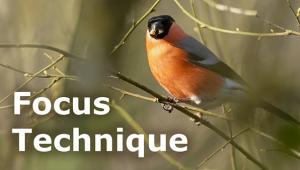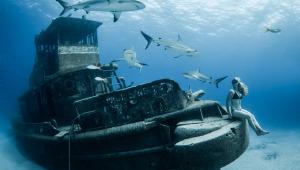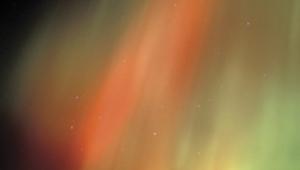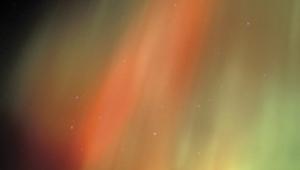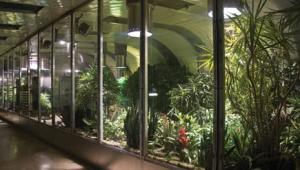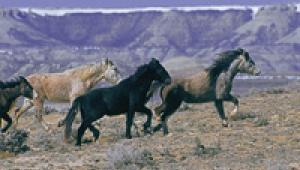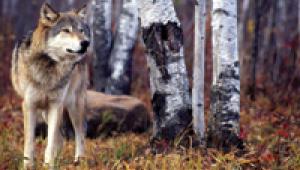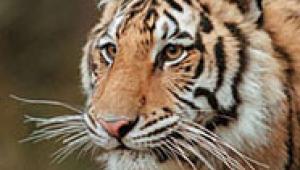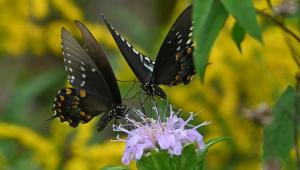The Call Of The Wild
Daryl Hawk Goes It Alone
It's a safe bet that
Daryl Hawk won't be looking for an assistant any time soon. When
he leaves family, friends, and the commercial, portrait, and advertising
photography business he runs out of his Connecticut studio in order
to pursue images and adventures in the wild places, he travels, and
photographs, alone. |
|||||||
The photos you see here were
taken in the Patagonia region of Argentina and Chile, a place he's
visited three times, most recently in November of last year, and an area
that perfectly suits him. Patagonia is, according to a description at
the website of the Public Broadcasting Service, "nature at its most
pristine and desolate, a land of wonders at the end of the earth."
And that makes it ideal for Daryl. |
|||||||
This type of photography is
a distinct change from his commercial work, and while the images produced
on his travels are marketed for fine art and stock, Daryl's reasons
for making the trips and taking the photographs has nothing to do with
commerce. It is, he says, his "most meaningful work, and the photography
that is closest to his heart." |
|||||||
Daryl's journeys are
more than a pursuit of images or experiences--they are, he says,
as necessary to him as breathing. "These are the places where I
come alive," he says. He believes that "most of the power
of photography comes from within," and that when he connects emotionally
with the world around him, he'll get his |
|||||||
Note: At Daryl's website, www.hawkphotography.net, you can see more of his adventure and travel photography as well as a selection of his commercial images. Also at the site is information about Daryl's cable television show, "The Unconventional Traveler," in which Daryl interviews photographers, explorers, and adventure travelers and occasionally highlights his own travel adventures. About The Photographs |
|||||||
|
|
||||||
